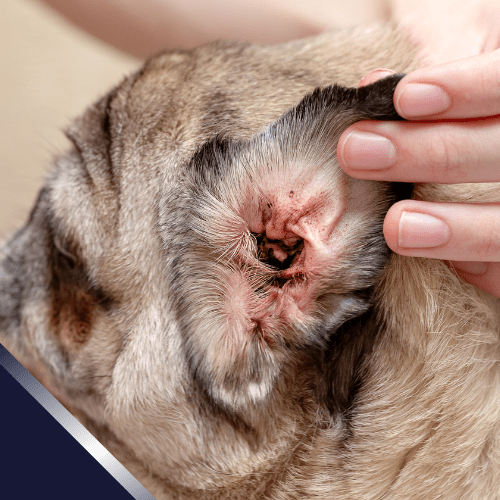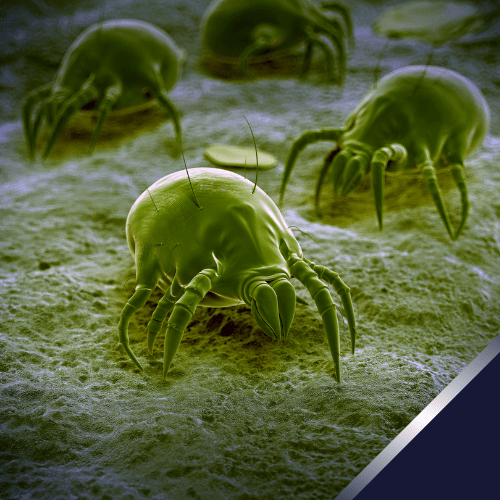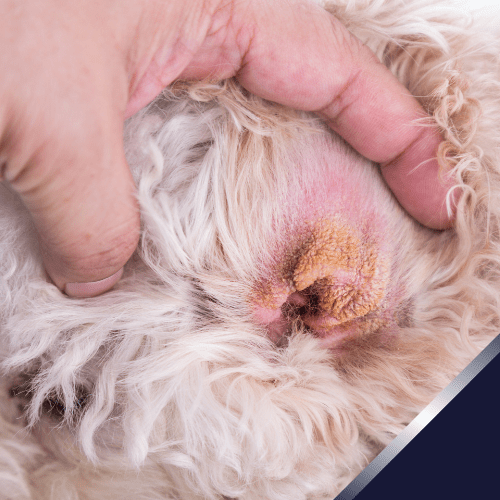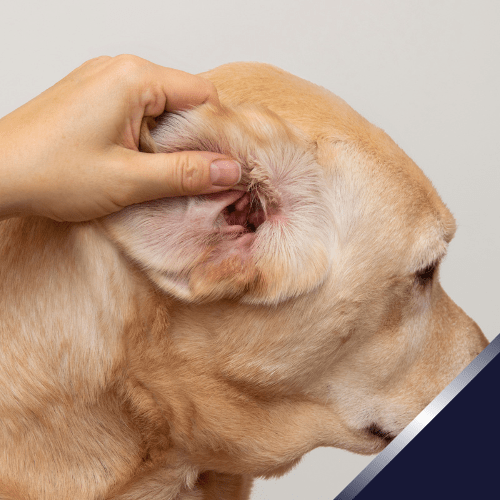Ear problems in dogs are quite common and can cause significant discomfort. Here are some of the most common ear issues dogs face, along with their symptoms, causes, and treatment options:
Let’s dive straight in…

Ear Infections (Otitis Externa)
Otitis externa is a common ear infection affecting the outer ear canal of pets, including dogs and cats. This condition can cause significant discomfort and, if left untreated, may lead to more serious health issues. Here’s an overview of otitis externa in pets:
- Symptoms: Redness, swelling, discharge (often with a foul odor), head shaking, scratching at the ear, pain, and in severe cases, loss of balance.
- Causes: Bacterial or yeast infections, ear mites, moisture (leading to infections), allergies, foreign objects in the ear, or hormonal imbalances.
- Treatment: Cleaning the ear, antibiotics or antifungal medications, addressing underlying causes like allergies or mites.
Ear Mites
Ear mites, primarily Otodectes cynotis, are common in dogs, affecting puppies and outdoor-time dogs. They live in the ear canal, feed on wax and oils, and require diagnosis and treatment.
- Symptoms: Intense itching, dark discharge that looks like coffee grounds, head shaking, scratching at the ear.
- Causes: Infestation by mites (commonly Otodectes cynotis).
- Treatment: Topical medications, thorough cleaning, sometimes systemic treatments to prevent re-infestation.


Allergies
Dog allergies are a common issue and can cause significant discomfort for your pet.
- Symptoms: Itching, redness, recurrent ear infections, scratching.
- Causes: Food allergies, environmental allergens (pollen, dust mites, etc.).
- Treatment: identifying and avoiding allergens, antihistamines, steroids, and special diets.
Hematomas
Ear hematomas are a common and painful condition in dogs, characterised by the accumulation of blood between the layers of the ear flap (pinna).
- Symptoms: Swollen ear flap, often due to trauma from scratching or shaking the head.
- Causes: Trauma from scratching or shaking the head, often secondary to infections or mites.
- Treatment: Draining the hematoma, surgery, and treating the underlying cause.


Foreign Objects
- Symptoms: Sudden onset of ear irritation, scratching, head shaking.
- Causes: Grass seeds, dirt, small objects entering the ear canal.
- Treatment: Removal of the object by a veterinarian, treatment of any resulting infection or irritation.
Polyps and Tumours
Ear tumours in dogs can occur in the outer ear canal, middle ear, or inner ear. They can be benign (non-cancerous) or malignant (cancerous) and often cause significant discomfort and health issues.
- Symptoms: persistent ear infections, discharge, sometimes visible growths, discomfort.
- Causes: Unknown, but polyps are benign growths, while tumours can be benign or malignant.
- Treatment: surgical removal, biopsy to determine the nature of the growth, and further treatment based on biopsy results.

Prevention Tips:
When should I take your dog to the vet?
- Persistent scratching or head shaking
- Redness, swelling, or obvious discomfort
- Unusual discharge, especially if foul-smelling
- Any growths or lumps
- Signs of pain or hearing loss
If you suspect your dog has an ear problem, it’s important to seek veterinary advice promptly. Early treatment can prevent more serious complications and ensure your dog remains comfortable and healthy.
Thank you for reading, We hope this has been helpful, Until next time…

